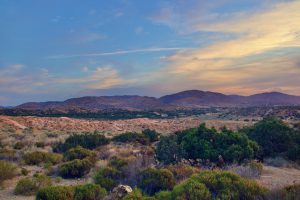
Healthy People in a Healthy Antelope Valley
In 2022, the California Community Foundation (CCF) launched the Regional Recovery Hub to strengthen place-based coordination in Los Angeles County regions that were most heavily impacted by
Variable Definitions:
Hazardous Waste Percentile: The percentile of a given area’s exposure to permitted hazardous waste facilities and hazardous waste generators, compared to the rest of LA County
For more information on the California Office of Environmental Health Hazard Assessment’s methodology, visit the CalEnviroScreen homepage.
Source:
California Office of Environmental Health Hazard Assessment – CalEnviroScreen 2.0 (2014), CalEnviroScreen 3.0 (2017), CalEnviroScreen 4.0 (2021)
Years Available:
CalEnviroScreen 2.0:
Data collected from 2009-2011 and published in 2014
CalEnviroScreen 3.0:
Data collected from 2012-2014 and published in 2017
CalEnviroScreen 4.0:
Data collected from 2017-2019 and published in 2021
“Most hazardous waste must be transported from hazardous waste generators to permitted recycling, treatment, storage, or disposal facilities (TSDF) by registered hazardous waste transporters. Shipments are accompanied by a hazardous waste manifest. There are widespread concerns for both human health and the environment from sites that serve to process or dispose of hazardous waste. Many newer facilities are designed to prevent the contamination of air, water, and soil with hazardous materials, but even newer facilities may negatively affect perceptions of surrounding areas in ways that have economic, social and health impacts. The Department of Toxic Substances Control maintains data on permitted facilities that are involved in the treatment, storage, or disposal of hazardous waste as well as information on hazardous waste generators.
Hazardous waste by definition is potentially dangerous or harmful to human health or the environment. The US Environmental Protection Agency and DTSC both have standards for determining when waste materials must be managed as hazardous waste. Hazardous waste can be liquids, solids, or contained gases. It can include manufacturing by-products and discarded used or unused materials such as cleaning fluids (solvents) or pesticides. Used oil and contaminated soil generated from a site clean-up can be hazardous wastes (DTSC, 2012). Electronic waste is defined as universal waste rather than hazardous waste by California law, and is subject to different rules for handling and transportation. However, some components of electronic devices contain hazardous materials, and facilities that collect or recycle electronic waste are potential sources of exposure to toxic chemicals (CalRecycle, 2020; DTSC, 2010).
The potential health effects that come from living near hazardous waste disposal sites have been examined in a number of studies (Vrijheid, 2000). While there is sometimes limited assessment of exposures that occur in nearby populations, there are studies that have found health effects, including diabetes and cardiovascular disease, associated with living in proximity to hazardous waste sites (Kouznetsova et al., 2007; Sergeev and Carpenter, 2005). Location of hazardous waste sites near communities has long been an environmental justice concern in California. For example, a study of 82 hazardous waste treatment, storage, and disposal facilities in Los Angeles County found that the communities most affected by the facilities are composed of working-class and ethnic minority populations living near industrial areas (Aliyu et al., 2011). A 1997 study correlated race/ethnicity with the location of hazardous waste treatment, storage and disposal facilities for both African-American and Latino populations (Boer et al., 1997).”
Excerpt from CalEnviroScreen 4.0
Citation:

In 2022, the California Community Foundation (CCF) launched the Regional Recovery Hub to strengthen place-based coordination in Los Angeles County regions that were most heavily impacted by

Health & Wealth Beyond genetics, many factors affect our health – some are related to personal behaviors and lifestyle choices, but others are connected to

Martha Gonzalez has been knocking on doors in the Boyle Heights neighborhood of Los Angeles since 2017. She confronts apathy, ignorance, and disinformation in the
